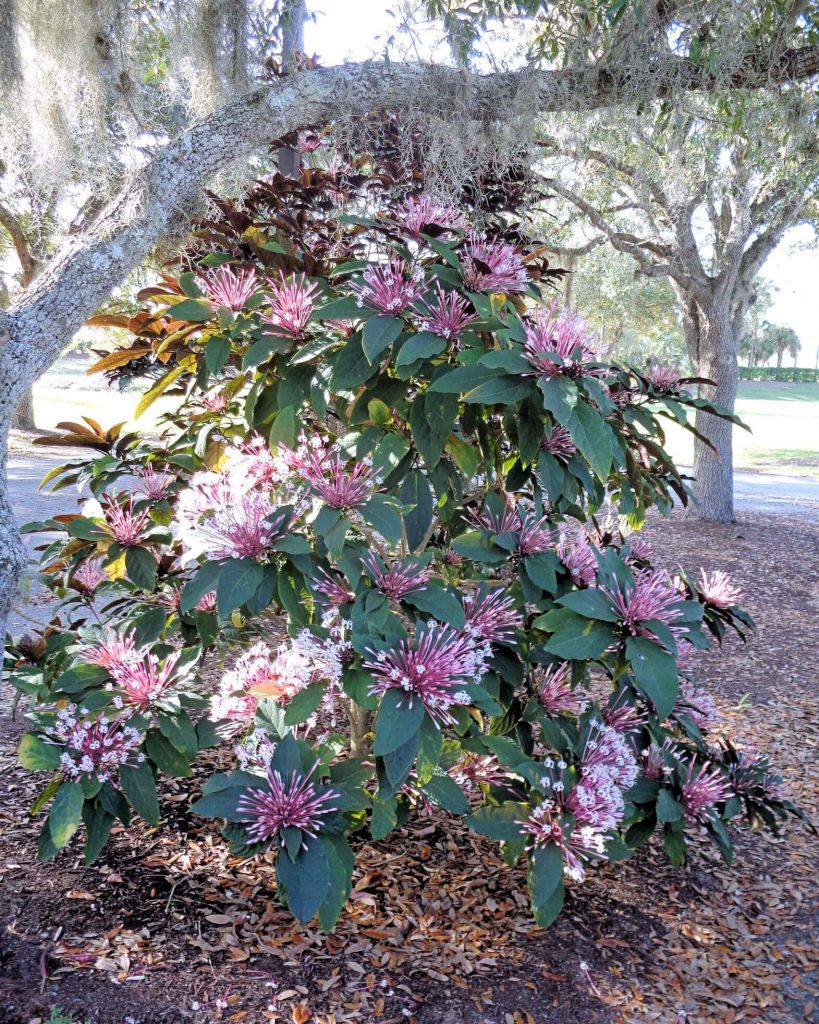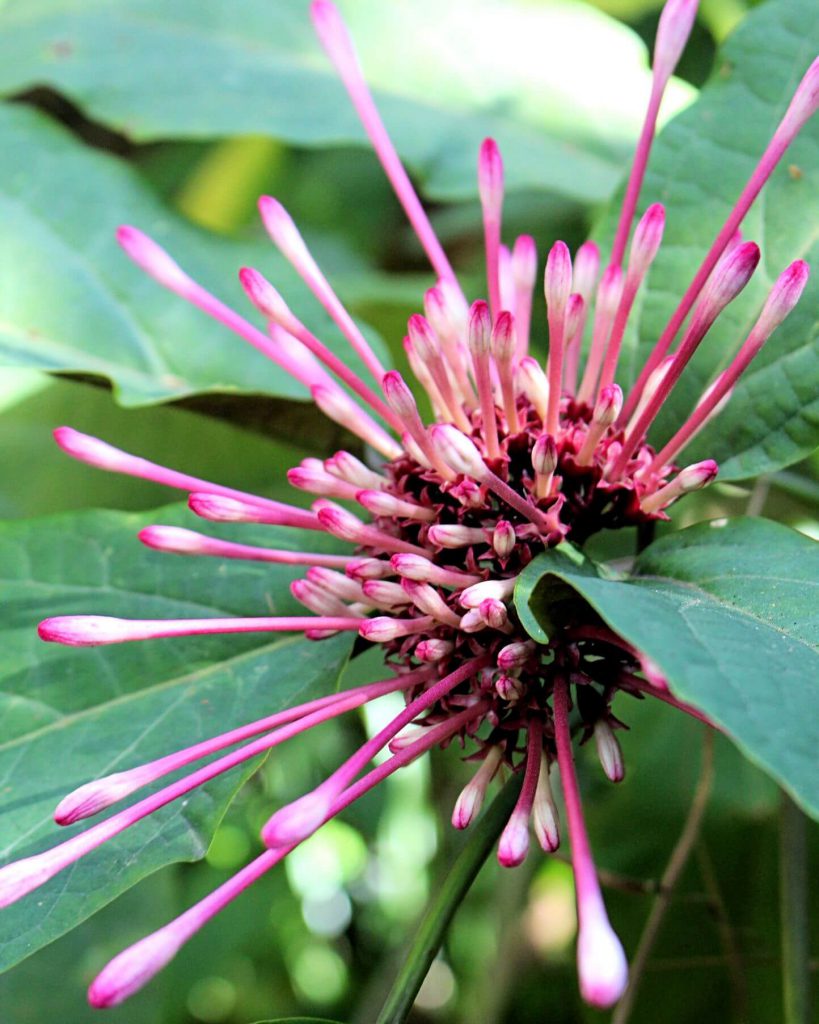By Ralph E. Mitchell
 It looks to be a good year for the flowering shrub known as the Starburst Clerodendrum. It’s clusters of pink flowers explode with a starburst pattern. The flowers, coupled with purplish foliage, make for a late winter show that stops traffic. It also makes you want to have one in your own landscape!
It looks to be a good year for the flowering shrub known as the Starburst Clerodendrum. It’s clusters of pink flowers explode with a starburst pattern. The flowers, coupled with purplish foliage, make for a late winter show that stops traffic. It also makes you want to have one in your own landscape!
Clerodendrums as a group are very vigorous growers and there are many species suitable for planting in our area. They tend to make their presence known at different times of the year, and now is the time for Clerodendrum quadriloculare. Starburst is originally from New Guinea, but it also does well in our Southwest Florida climate. Growing up to fifteen feet tall, this is a large shrub and some people even shape it up more like a tree. The leaves are ornamental all by themselves with green and touch of purple on top, and dark purple underneath. There is even a fully variegated cultivar that is a colorful show unto itself. While it only blooms once year in late winter, the flowers catch the eye from a distance. The tubular, star-shaped flowers come out in a cluster with closed white tips that resemble cotton swabs thus earning it the nickname of “Q-Tip” plant. Once opened, the white and pink flowers display with a “starburst” of color nicely set against the purplish foliage. The flowers are known to attract hummingbirds and certain butterflies in season. Once flowering is over, prune to keep the plant in-bounds.
Plant your starburst in full sun for best growth and flowering. This shrub can take some shade, but both the foliage canopy and blooms may become leggy and not as ornamental. Once established, this shrub is very drought tolerant. Many Clerodendrums have a habit of producing copious amounts of suckers. I have grown this Clerodendrum where, to my surprise, suckers emerged well away from the mother plant. Some people like this screening effect and promote an accumulation of suckers. Otherwise, suckers can be mowed down to manage them, plucked by hand, or potted up for additional plants and pass-alongs. They are not officially invasive, but can easily go astray, so just be aware of this characteristic.
 The Starburst Clerodendrum is blooming now in a neighborhood near you! I also see it regularly now in garden centers as the blooming plants sell themselves – get one today! For more information on all types of flowering shrubs suitable for our area, please call our Master Gardener volunteers on the Plant Lifeline on Mondays, Wednesdays and Fridays from 1 to 4 pm at 764-4340 for gardening help and insight into their role as an Extension volunteer.
The Starburst Clerodendrum is blooming now in a neighborhood near you! I also see it regularly now in garden centers as the blooming plants sell themselves – get one today! For more information on all types of flowering shrubs suitable for our area, please call our Master Gardener volunteers on the Plant Lifeline on Mondays, Wednesdays and Fridays from 1 to 4 pm at 764-4340 for gardening help and insight into their role as an Extension volunteer.
Just as a reminder, our new office is located at the North Charlotte Regional Park at 1120 O’Donnell Blvd, Port Charlotte FL 33953. The Plant Lifeline is also now open at our new site! Our phone numbers and email addresses continue to remain the same. Don’t forget to visit our other County Plant Clinics in the area. Our Eastport Environmental Demonstration Garden is always open to the public outside the gate at 25550 Harbor View Road and will continue to be in operation and open to the public. Master Gardener volunteers tend this garden on Tuesday mornings from 8 to 10 am and are available for questions. Ralph E. Mitchell is the Director/Horticulture Agent for the UF/IFAS Charlotte County Extension Service. He can be reached at 941-764-4344 or ralph.mitchell@charlottecountyfl.gov.
Resources:
UF/IFAS Gardening Solutions – Starburst Clerodendron. (2020) The University of Florida Extension Service, IFAS.
Landre, C. (2020) Clerodendrum quadriloculare. South Florida Plant Guide. https://www.south-florida-plant-guide.com/clerodendrum-quadriloculare.html.
Matthaei Botanical Gardens (2013) The Q-Tip Plant’s Act of Self-Denial. University of Michigan. https://mbgna.umich.edu/the-q-tip-plants-act-of-self-denial/.
 2
2
